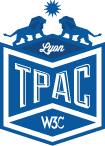28 November 2012
 W3C announces today W3Conf:
Practical Standards for Web Professionals, W3C's second
annual developer conference, in San Francisco on 21-22 February
2013. Presentations will focus on practical, cutting-edge
standards that developers and designers can use across browsers
today, and give a glimpse into what's coming. The conference will
feature leading experts in the Web industry on HTML5, CSS,
graphics, mobiles, accessibility, multimedia, APIs, and
more. Space is limited, so register now.
W3C announces today W3Conf:
Practical Standards for Web Professionals, W3C's second
annual developer conference, in San Francisco on 21-22 February
2013. Presentations will focus on practical, cutting-edge
standards that developers and designers can use across browsers
today, and give a glimpse into what's coming. The conference will
feature leading experts in the Web industry on HTML5, CSS,
graphics, mobiles, accessibility, multimedia, APIs, and
more. Space is limited, so register now.